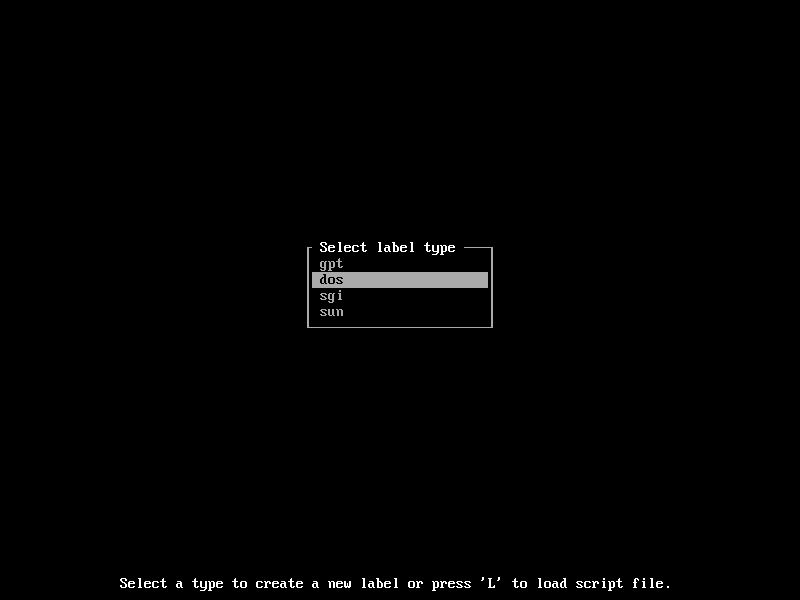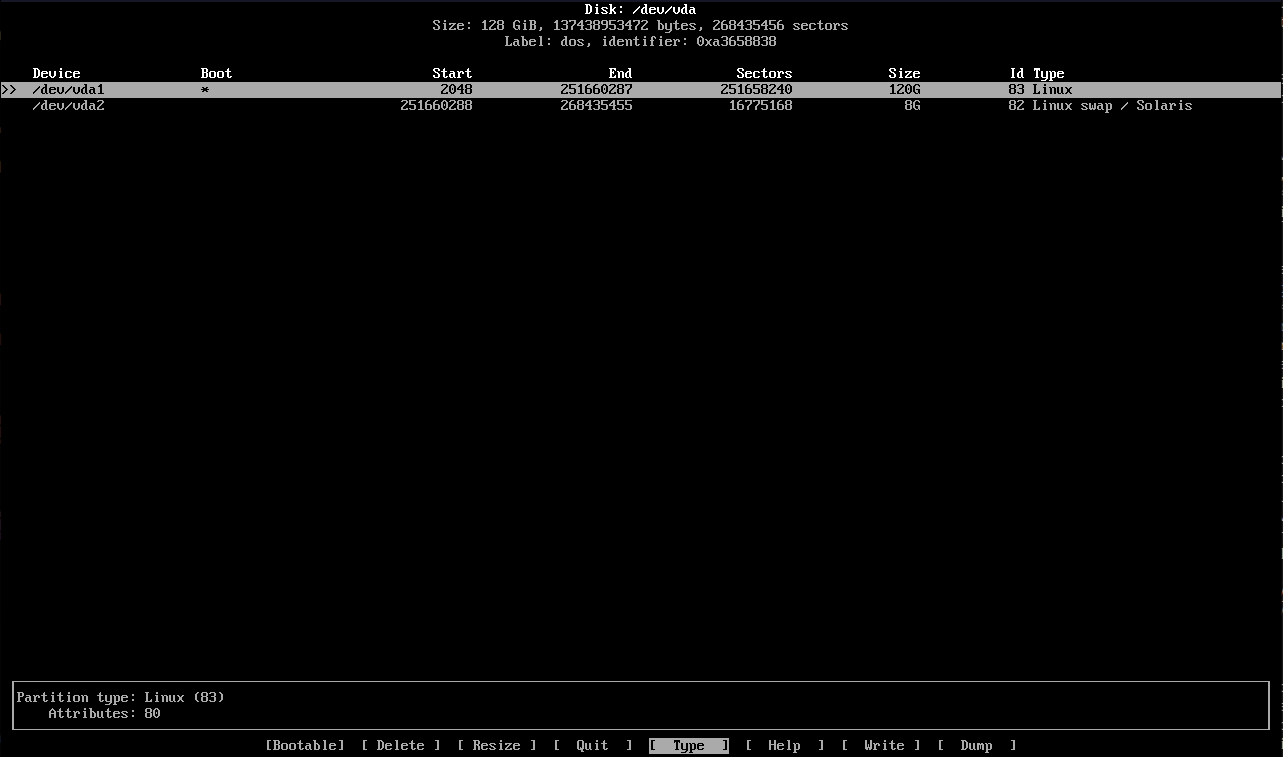For the partitioning, if you are afraid to make mistakes, it is better to use a LiveCG like GParted available at the following address: http://gparted.org/
With cfdisk, on the following start screen, we choose the option "dos" for the label type to apply.

For the partitioning to apply:
| Partition | Mount point | Size | Reference | Filesystem |
|---|---|---|---|---|
| /dev/sda1 | / and /home | Rest of the disk | 83 | BTRFS |
| /dev/sda2 | RAM size or more - With more than 8 GB of RAM, 8 GB is recommended | 82 | swap |
It is important not to forget to mark the / partition as bootable. Which gives the following screen in cfdisk.

To format the root partition, enter the following command:
mkfs.btrfs /dev/sda1
Without forgetting the swap partition:
mkswap /dev/sda2
swapon /dev/sda2
We will after that create the mount points and the BTRFS subvolumes and mount the partitions.
mount /dev/sda1 /mnt
btrfs subvolume create /mnt/@ /mnt/@home
umount /mnt
mount -o compress=zstd,subvol=@ /dev/sda1 /mnt
mkdir /mnt/home
mount -o compress=zstd,subvol=@home /dev/sda1 /mnt/home
We can now start installing the base system.
In BIOS mode, like in UEFI, I use GRUB2. The os-prober package is necessary for a dual boot.
To install GRUB in BIOS mode:
pacman -Syy grub os-prober grub-btrfs
grub-install --no-floppy --recheck /dev/sda
Note: After generating the initramfs and installing GRUB, we must generate the GRUB configuration file. It's a modification made since GRUB 2:2.02-8:
grub-mkconfig -o /boot/grub/grub.cfg
The rest of the installation is common with the installation in UEFI mode.